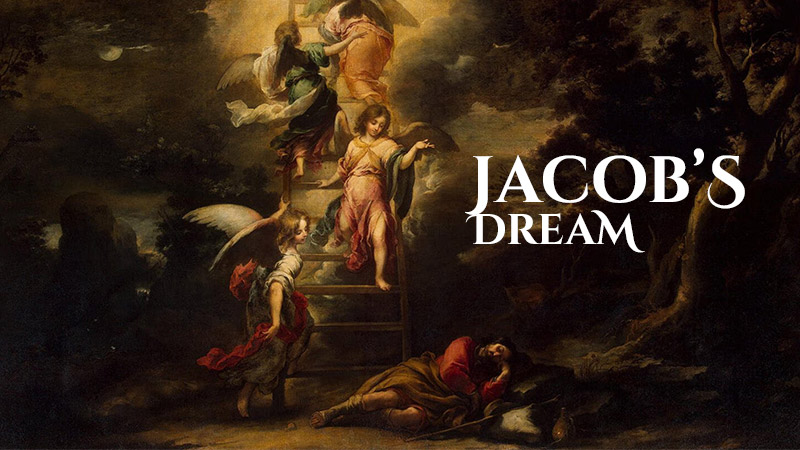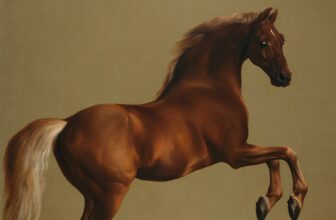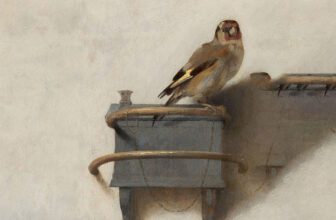
Dreaming Of Angels Is Good But Nightmare Is The Worst
Jacob’s Dream Painting by Bartolomé Esteban Murillo
In the 17th century, during the height of the Spanish Baroque period, the artist Bartolomé Esteban Murillo created a painting that captures a moment of divine mystery and human vulnerability. This painting, Jacob’s Dream, is a masterpiece not only for its technical beauty but also for its deep spiritual and symbolic significance. Through its soft palette, ethereal figures, and evocative imagery, Jacob’s Dream speaks to the aspirations of the soul, the mysteries of divine revelation, and the intimate link between heaven and earth.
This article explores the narrative, meaning, symbolism, artistic style, and historical context of Jacob’s Dream, offering an in-depth interpretation of one of Murillo’s most beloved religious works.
Who Painted Jacob’s Dream?
Jacob’s Dream was painted by Bartolomé Esteban Murillo (1617–1682), a Spanish Baroque painter best known for his religious works and depictions of street children in Seville. Murillo is celebrated for his tender realism, luminous use of light, and ability to convey deep emotion through subtle expressions and gestures. He was one of the most prominent painters of his time, and his work greatly influenced both Spanish and European art.
Born in Seville, Murillo was deeply influenced by the Catholic Counter-Reformation, which emphasized religious art as a tool for spiritual reflection and teaching. His paintings often focused on biblical scenes, the lives of saints, and moments of divine intervention.
What Is Jacob’s Dream All About?
The painting Jacob’s Dream depicts a pivotal moment from the Book of Genesis (28:10–19). In the biblical account, Jacob, the son of Isaac and grandson of Abraham, is on a journey to Haran. Exhausted and alone, he stops to rest for the night, using a stone as a pillow. During his sleep, Jacob has a vision: he sees a ladder reaching from earth to heaven, with angels ascending and descending upon it. At the top stands God, who reaffirms the covenant made with Abraham and promises that Jacob’s descendants will inherit the land.
This vision becomes a turning point in Jacob’s life. Upon waking, he declares, “Surely the Lord is in this place, and I did not know it… This is none other than the house of God, and this is the gate of heaven” (Genesis 28:16–17). Jacob names the place Bethel, meaning “House of God.”
Murillo’s painting captures the essence of this moment, not just the dream itself, but its spiritual weight and emotional atmosphere.
What Is Happening in the Painting?
In Jacob’s Dream, Murillo presents Jacob sleeping peacefully in a natural landscape, with his head resting on a rock. He is dressed in a simple robe, his body relaxed, and his expression serene. Above him, in a brilliant vision, angels climb and descend a golden, luminous ladder that stretches upward into the clouds. The dreamlike quality is accentuated by the soft glow surrounding the angels, who are bathed in divine light.
Murillo chose to depict the angels as gentle, youthful beings, clothed in flowing garments, their movements graceful and effortless. Some angels look downward toward Jacob, while others gaze heavenward, continuing their ascent. This visual narrative reinforces the idea that heaven and earth are connected, not separated, and that Jacob, though asleep, is experiencing a divine reality.
What is especially compelling about Murillo’s depiction is the balance between the physical and spiritual realms. Jacob’s body rests on the earth, grounded in human experience, while his dream lifts our eyes toward the heavens. It is a painting that invites both contemplation and awe.
Symbolism and Interpretation
Murillo’s Jacob’s Dream is rich in symbolism, much of it drawn from biblical and theological sources, as well as the visual language of the Baroque period.
1. The Ladder as the Axis Mundi
The ladder in Jacob’s dream represents the axis mundi, a concept in many religious traditions describing a cosmic connection between the physical world and the divine realm. In Christian thought, this ladder is symbolic of Christ Himself, who bridges the gap between God and humanity. The ascending and descending angels reflect the continuous communication between the two worlds.
2. Jacob’s Rest as a Moment of Revelation
Jacob’s peaceful sleep suggests that divine revelations often come when we are most vulnerable or unaware. His slumber becomes a metaphor for spiritual openness. In his dream, Jacob is given insight and blessing, marking the beginning of his transformation.
3. Light as Divine Presence
Murillo uses light masterfully in this work. The glow surrounding the angels and the upper part of the ladder symbolizes the presence of God. This radiant light contrasts with the earth-toned palette surrounding Jacob, drawing our eyes upward and reinforcing the theme of divine transcendence.
4. Angels as Messengers
The angels serve as intermediaries between heaven and earth, a core theme in Christian iconography. Their presence in the painting underlines God’s closeness to humanity and His ongoing guidance.
5. The Stone Pillow
Jacob’s use of a stone for a pillow is not just a detail, it’s a symbol of humility and hardship. In the Genesis story, the stone later becomes an altar to God, suggesting that ordinary or difficult moments in life can become sacred when touched by divine purpose.
What Type of Art Is Jacob’s Dream?
Jacob’s Dream is a classic example of Baroque religious painting, characterized by:
Realism: Murillo’s figures are rendered with naturalistic detail, making the scene emotionally accessible to viewers.
Dramatic Light and Shadow: Though Murillo’s use of light is more subtle than some of his contemporaries, he still employs chiaroscuro to create depth and highlight spiritual elements.
Emotion and Movement: The angels’ fluid motion and Jacob’s relaxed posture convey a sense of life and transcendence.
Didactic Function: Baroque religious art was intended to teach and inspire. Murillo’s painting communicates the message of divine grace and covenant through visual beauty.
In terms of genre, it is a biblical narrative painting, and it was likely intended for a religious institution, possibly a monastery or church.
Murillo’s Unique Artistic Approach
What sets Murillo apart from other Baroque artists is his tenderness and compassion. While some Baroque painters emphasized dramatic intensity and grandeur (such as Caravaggio or Rubens), Murillo embraced a more intimate and serene approach. In Jacob’s Dream, the viewer is drawn not by shock or spectacle, but by quiet wonder. The gentle features of the angels, the softness of the colors, and the dreamlike glow create a sense of sacred tranquility.
Murillo was also adept at blending idealism with naturalism. While the heavenly vision is idealized, Jacob’s figure is rooted in reality. His bare feet, tanned skin, and rustic clothing suggest the humility and humanity of the biblical patriarch.
Where Is Jacob’s Dream Painting Located Today?
Today, Jacob’s Dream by Bartolomé Esteban Murillo is housed in the Museo del Prado in Madrid, Spain. The Prado is one of the most prestigious art museums in the world, home to an unparalleled collection of Spanish art, including works by Velázquez, Goya, and El Greco.
Murillo’s Jacob’s Dream is displayed as part of the museum’s Baroque collection, where it continues to captivate audiences with its spiritual depth and artistic brilliance. Visitors to the Prado can view the painting up close and appreciate the delicate brushwork, luminous colors, and emotional resonance that have made Murillo’s work timeless.
The Legacy of Jacob’s Dream
Murillo’s Jacob’s Dream continues to resonate with modern audiences because of its universal themes, search for meaning, divine connection, and personal transformation. In a world often overwhelmed by noise and distraction, the painting invites viewers to pause, reflect, and consider the possibility that the sacred can be found in the most unexpected moments.
This work is also a reminder of Murillo’s legacy as a painter of the soul. Unlike artists who sought to impress with grandiosity, Murillo aimed to move hearts. His art does not shout; it whispers, drawing us into a quiet dialogue with the divine.
Through Jacob’s Dream, Murillo captured the profound mystery of God revealing Himself in dreams, in nature, and in the human heart. The ladder between heaven and earth is not just Jacob’s, it is a symbol for every person’s spiritual journey.
Jacob’s Dream by Bartolomé Esteban Murillo is more than a depiction of a biblical vision, it is a window into the mystical, an invitation to contemplate the divine, and a testament to the power of art to bridge heaven and earth. With its graceful composition, gentle radiance, and layered symbolism, the painting remains one of Murillo’s most poignant works.
Whether seen in person at the Prado or studied in art history classes, Jacob’s Dream continues to inspire. It speaks of hope, destiny, and the unseen presence of God in the quiet corners of our lives. It reminds us, as it reminded Jacob, that “the Lord is in this place”, often when we least expect it. image/berlinersgenesis




